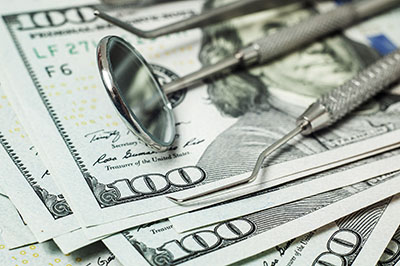How to Take a Big Bite Out of Dental Costs
Last updated November 2023
When choosing medical providers you of course should care most about the quality of care you'll receive. But for many dental patients, especially those without insurance coverage for it, cost matters, too. Fortunately, we found that many dentists who rated high on all aspects of care and service also had low fees.
To assess dentists’ fees, Checkbook’s undercover shoppers called each of the general dentistry practices listed in our Ratings Tables and asked them to provide their fees for several common procedures.
The figure below shows low, average, and high costs for the procedures we priced. As you can see, costs vary widely from practice to practice. For example, fees for a routine examination and cleaning ranged from $50 to $265, and charges for a porcelain crown for an adult molar, including post and core, ranged from $800 to $3,110.
We used the prices to calculate price comparison scores for each general dentist, reported on our Ratings Tables. They show how a dentist’s prices compare to the average prices at all surveyed dentists for the same mix of procedures. The price comparison scores are calculated so that a score of $100 is about average, a score of $110 means prices are about 10 percent above average, and a score of $90 is about 10 percent below average.
Many dentists who received high patient ratings on all aspects of care and service also charged below-average fees. In fact, we found little quality-price correlation. Of the 155 general dentists listed on our Ratings Tables who receive our top rating for quality, 65 quoted lower-than-average fees to our shoppers.
Regardless of a dentist’s charges, the cost of dental care will be high if you are overtreated. Some ways to keep costs down:
Do your part.
Good preventive care is by far the best way to save money. Regular brushing, flossing, and professional cleanings will help you avoid future expenses for treatment and restorations.
Evaluate whether recommended services make sense.
Look for signs of individually tailored treatment—for instance, scheduling different intervals between visits depending on the patient’s propensity for dental disease, and calling for a complete X-ray survey no more than every three years, unless special circumstances require more frequent examination.
 Request costs in advance.
Request costs in advance.
A written treatment plan with costs will help you avoid an unpleasant price surprise—and give you the chance to switch to a lower-cost dentist, if necessary. Almost all dentists will provide free estimates.
Dentists should not make it uncomfortable for you to discuss costs, and they should be willing to work out payment plans or alternative treatments if the costs exceed your means.
Get a second opinion.
Probably the most underused consumer tool in dentistry, a second opinion before a costly procedure can ensure you get appropriate, reasonably priced care. Consult a dentist who is independent of your regular dentist. If opinions differ, weigh each dentist’s reasons—and possibly solicit still another opinion.
If you switch dentists, have the new practice obtain your records.
Doing so may spare you costs of redoing tests. For example, unless your new dentist has a good reason to take new ones, full-mouth X-rays from a previous doc are usually good for three to five years. Your former dentist is ethically bound to pass along X-rays and other records.
Ask about specials and discounts.
Some dentists offer periodic specials on certain procedures to draw in patients who have been putting off dental work. Others advertise low-priced package deals—including examination, cleaning, and X-rays—to attract new patients. To save time and money in collecting unpaid bills, many dentists offer discounts for payment at the time of service. Some offer discounts to special groups such as seniors, fire and police personnel, students, persons with limited incomes, etc.
Double-check your health insurance policy for dental benefits.
If you have kids, they could already have dental coverage under your family’s health insurance plan. Most individual and small-group health plans are required to provide basic dental coverage for children under age 19.
Although most health insurance plans don’t provide dental benefits to adults, it’s still worth checking. Some Medicare Advantage plans, for example, include basic dental coverage, and many “consumer-driven” and “high-deductible” plans let you set aside money for dental expenses.
If you have dental insurance, or are thinking about buying it, make sure you understand the benefits and limitations, which vary greatly from policy to policy. Most plans include groups of participating dentists who accept a specified fee schedule. You’ll probably save a lot by using one of these dentists—and not save much by using a nonparticipating one.
Fund your FSA.
Whether or not you have dental insurance, estimate your likely out-of-pocket medical and dental costs, and stash that money in a flexible spending account (FSA). By funding an FSA with pretax earnings, you effectively reduce eligible bills by your tax-bracket percentage.
Consider a dental clinic.
To provide their students with hands-on experience, dental schools operate clinics where students treat patients under the supervision of dental school faculty; the University of Illinois at Chicago operates such a clinic. We’ve found prices at dental clinics to be significantly lower than average prices for dental practices. Keep in mind that if you need extensive treatment, it is likely to take longer at a dental school clinic than with a private dentist.


